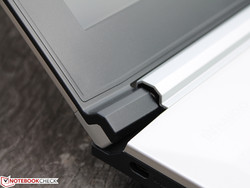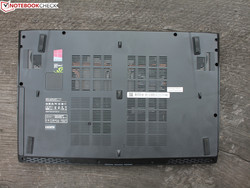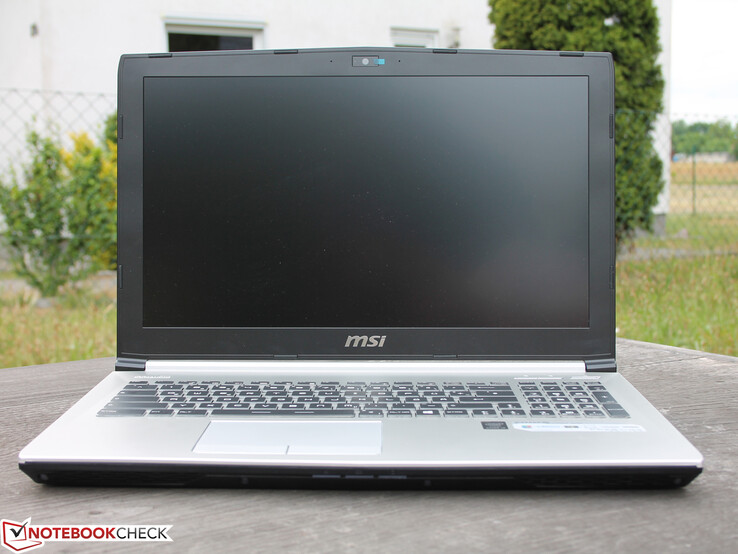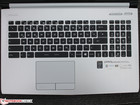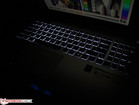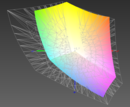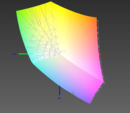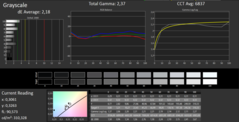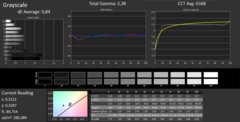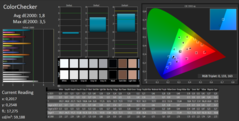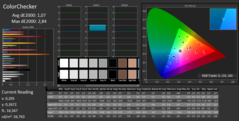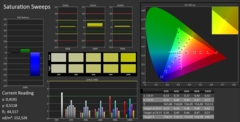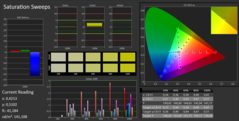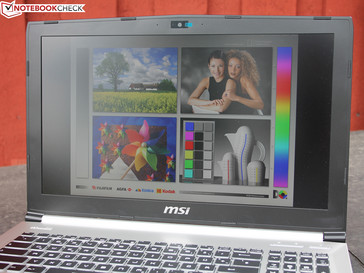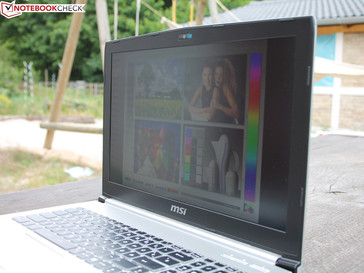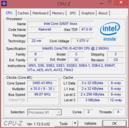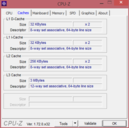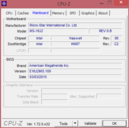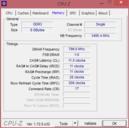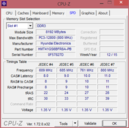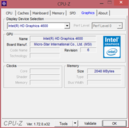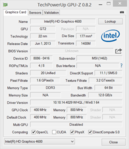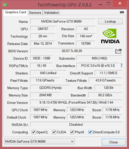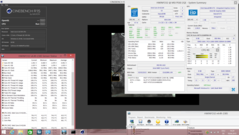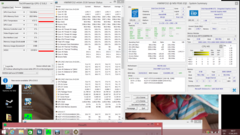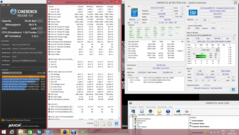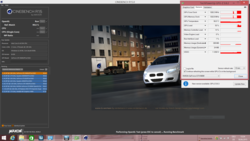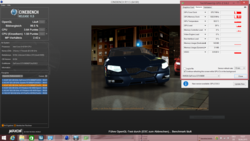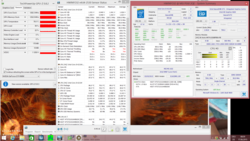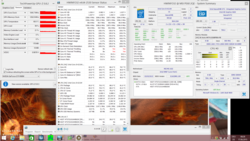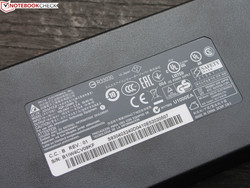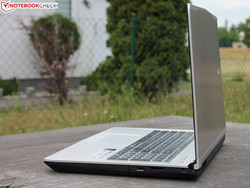MSI PE60 2QE Prestige Notebook Review

For the original German review, see here.
Clear lines, accurate colors, high-performance components and yet ergonomic in waste heat and noise. MSI's Prestige series aims to impress demanding consumers and professionals alike. Not an easy task since anyone inching in on Asus' UX501, Dell's XPS 15 or the Aspire Nitro VN7-591G Black Edition has to be quite shrewd.
The slogan "The Essence of Elite" promises the highest quality in all fundamental aspects of a multimedia or editing laptop: These should not only include the ideal color reproduction with sRGB coverage, the elegant aluminum design, the clever dual-fan cooling, the powerful GTX graphics card, and a four-way speaker system, but also a multitude of interfaces including DisplayPort and high-speed network chips. Are these empty marketing words or a 15-inch machine that really fulfills the highest demands, does not cost a fortune, and can keep up with the best rivals?
Rivals are 15-inch laptops with high-quality screens, high-performance components and many interfaces. Therefore, low-voltage processors and TN screens with poor viewing angles and pale colors do not fit into this concept. The identical GPU makes the Aspire V15 Nitro Black Edition and ZenBook Pro UX501JW the strongest rivals. The Black Edition is available with an FHD screen at a starting price of 1000 Euros (~$1113).
·Acer Aspire V 15 Nitro Black Edition VN7-591G (4720HQ, GTX 960M, 4K/FHD)
·Asus N551JK-CN166H (4200H, GTX 850M, FHD)
·Asus ZenBook Pro UX501JW (4720HQ, GTX 960M, 4K)
·Toshiba Satellite P50t-B-10T (4710HQ, Radeon R9 M265X, 4K)
·Dell XPS 15 (9530-0538) (4712HQ, GT 750M, 4K)
The PE60 is not aimed at workstation customers; MSI has its WS60 for this group (1850 Euros/~$2060, FHD). Will the screen's quality separate the wheat from the chaff here? Can the casing deal adequately with the waste heat produced by the CPU and GTX graphics cores? What about throttling? How good are the maintenance options? All answers can be found in the following report.
Case
Would we take it along to a business meeting? Definitely. The brushed aluminum surfaces, backlit keyboard and clear lines are quite attractive when not looking too closely.
The lid is very thin and thus quite pliable. We could dent the display and warp it to a small extent without much effort. However, the quality surprised us: The screen was exceptionally insensitive to all twisting, pressure and warping attempts. It did not exhibit any pressure marks even when clear pressure was applied to the display's back. Only by using added pressure on the matte, non-touch surface from the front did it display some wave formation.
The base is a simple plastic tray that completely closes the chassis without any maintenance covers at the bottom. Although many Philips screws have to be released to open and remove the bottom, it presents outstanding cleaning and upgrading options (see Connectivity).
The top of the base, and the wrist rest, in particular, is mounted firmly. There are no hollow spaces that could be dented. This is also true for the key area, but not for the underside. The area around the cooling vent grilles can be depressed easily. The base itself is very stable and does not creak under forceful twisting attempts. The PE60's makes a good impression in terms of feel, but it is not premium-range build quality. The aluminum or magnesium casing of Asus' UX501 and Dell's XPS 15 clearly outshine our Prestige PE60. The casing's quality is comparable with that of the Aspire Nitro or Asus' N551JK.
It is not only the plastic tray, but also small burrs on the aluminum edges and a wobbly hinge cover (silver bar between the joints) that reduce the quality impression.
Connectivity
Power users will operate their laptop with external monitors and multiple peripherals. As can be seen from the following pictures, MSI installs the entire range of ports. The mini-DisplayPort and gold-plated, dedicated audio in and out are typical for professional use. Unfortunately, all interfaces are on the sides and not even one is on the rear. The lid does not open to the extent that it would block any ports. Thus, numerous cables will probably will clutter the desk, which could be especially annoying for left-handed users when the mouse area is blocked. The optical drive no longer belongs to the basics these days, as Asus' UX501 and Dell's XPS 15 prove with their slim casings. However, the PE60 has one just in case.
Communication
The networking connections are composed of a Qualcomm Killer e2200 PCI-E Gigabit Controller and an Intel Dual Band Wireless-AC 3160 (a/b/g/n/ac) chip with Bluetooth 4.0. The Killer is also installed in MSI's GT72, MSI's GP70 and Medion's Erazer X7825. It scores with clearly arranged software (Network Manager) and short pings.
The wireless adapter also impressed us. Despite the aluminum lid (both Wi-Fi antennas are normally installed in the frame), the PE60 transmitted without interruption up to our 45 meter (~148 ft) measuring point outside the building. Even with 2 - 3 bars, websites opened at full speed. That is rare. Normally, even if the review samples still have a connection to the AC router at 45 meters (~148 ft), their browsing speed is reduced significantly. Thanks to 5.0 GHz and ac support (Wi-Fi 802.11 a/b/g/n), Intel's Wireless AC 3160 provides an impressive performance.
Software
MSI does not preload productivity software on its PE60-load; the only tools worth mentioning are the Shortcut Manager, True Color (color profiles) and the Killer Network Manager. Shortcut lists and profiles can be created with the former. Even individual keys can be disabled within such a profile. MSI has kept professional users in mind since they often use shortcuts to increase their workflow.
Maintenance
We did not open the shop model, but we will add screenshots of an opened, lent MSI device at a later date.
Webcam
A 1.3 MP webcam, i.e. 1280x720 pixels, is included as the basic configuration of every modern laptop. Unfortunately, the quality of pictures and recordings has apparently not improved over the past 10 years. The results that the HD webcam delivered under good daylight really cannot get any worse. Totally faded surfaces, the lack of outlines - they look as if they have been treated with some kind of diffusion filter. That does not fit in a premium laptop.
Warranty
MSI seems to be convinced of its quality and extends the manufacturer's warranty with a pick-up and return service to three years. Two years are usually the rule.
Input Devices
Keyboard
The keyboard relies on transparent keys with a painted top. Therefore, the three-level backlight nicely illuminates the keys from below while the printed characters shine through. The brightness or the light can be manipulated quite easily via the FN key. The keys are flat, and the fingers lack certain guidance. On the other hand, the writer will find a clear drop, a firm yet not hard stroke (without yielding, recoiling, clattering), and a crisp pressure point. The keys are adequately sized, with sufficient space between them. The lettering is very legible even when the illumination is disabled. This is commendable because backlit keyboards often suffer from poor readability in bright environments (daylight, outdoors).
MSI has opted for an unusual font size for its SteelSeries keyboard, but the user will soon get used to it. The number pad keys have been scaled down slightly, but they can still be used perfectly with the calculator, Excel, etc.
MSI has primarily set F1-F12 keys, which is also proper for an office device since professional editing tools still frequently utilize the F-keys. The special function for hardware (e.g. extending the screen, webcam on/off, or flight mode) are available via the FN key. The keys next to the power button allow switching between the color profiles or enabling the cooler boost.
Touchpad
ClickPad - no thanks? MSI must have had something in mind as it installed a conventional multi-touchpad with two physical keys in the PE60 and PE70 instead of what is the trend. The matte surface is pleasant to touch and the fingers can glide without slipping or pulling streaks. The area is sensitive up to its edges and it is separated sufficiently.
Unfortunately, the mouse keys produce a loud, cheap-sounding noise with a short drop. However, the pressure point is clear and the stroke firm. A soft restrained stroke, rubber-coated keys and a clear drop would have been a better choice for a laptop that power users will sometimes work with for the entire day. However, these keys are not very enjoyable and thus users will inevitably use an external input device. Perhaps the manufacturer has reckoned with the motto: An incorporated mouse replacement is no match for external professional input devices, so we will install a basic model from the outset.
Display
A matte surface (anti-glare, haze 25%), IPS type (PLS version by Samsung) and 1920x1080 pixels may sound good at first, but nothing special. Laptops priced at 700 Euros (~$780) already offer Full HD. MSI promises a 72% coverage of the NTSC color space (color television standard), which very roughly corresponds to AdobeRGB. sRGB is almost completely included in NTSC, and thus we hope for a 100% sRGB reproduction. For example, Adobe RGB (1998) is important for pre-press professionals when they need to display all colors of the CMYK seven color print on their screen. Depending on their size, corresponding DreamColor LCD monitors cost between 600 and 2000 Euros (~$668 and ~$2226).
MSI calls it True Color Technology. This is preloaded color profiles that can be selected by pressing a button (True Color application). One profile is simply named sRGB. The other profiles are calibrated for specific scenarios. Six predefined color profiles are available and range from office over sRGB and design up to movie and gaming mode. The profiles can be assigned to specified applications, making manual switching unnecessary. Color profiles can also be shared with other users via the Sharing feature so that colors are identical on all MSI devices with True Color.
Note: We closely examined the screen of the 17-inch sister model in another article: Preview MSI PE70 Multimedia Notebook.
| |||||||||||||||||||||||||
Brightness Distribution: 90 %
Center on Battery: 251 cd/m²
Contrast: 857:1 (Black: 0.35 cd/m²)
ΔE Color 1.8 | 0.5-29.43 Ø5
ΔE Greyscale 2.18 | 0.57-98 Ø5.3
97% sRGB (Argyll 1.6.3 3D)
64% AdobeRGB 1998 (Argyll 1.6.3 3D)
69.8% AdobeRGB 1998 (Argyll 2.2.0 3D)
97% sRGB (Argyll 2.2.0 3D)
67.6% Display P3 (Argyll 2.2.0 3D)
Gamma: 2.37
| MSI PE60-2QEi581 GeForce GTX 960M, 4210H, HGST Travelstar 7K1000 HTS721010A9E630 | Acer Aspire VN7-591G-727P GeForce GTX 960M, 4720HQ, Toshiba HG6 THNSNJ256G8NU | Asus N551JK-CN166H GeForce GTX 850M, 4200H, HGST Travelstar 5K1000 HTS541010A9E680 | Asus UX501JW-DS71T GeForce GTX 960M, 4720HQ, Samsung SSD SM951 512 GB MZHPV512HDGL | Toshiba Satellite P50t-B-10T Radeon R9 M265X, 4710HQ, Toshiba MQ01ABD100 | Dell XPS 15 (9530-0538) GeForce GT 750M, 4712HQ, Lite-On LMT-512L9M | |
|---|---|---|---|---|---|---|
| Display | -13% | -0% | -25% | -5% | -3% | |
| Display P3 Coverage | 67.6 | 64.9 -4% | 67.3 0% | 50.2 -26% | 64.1 -5% | 64.9 -4% |
| sRGB Coverage | 97 | 66.9 -31% | 96.7 0% | 75 -23% | 92.3 -5% | 96.1 -1% |
| AdobeRGB 1998 Coverage | 69.8 | 66.9 -4% | 69.4 -1% | 51.8 -26% | 65.5 -6% | 66.9 -4% |
| Screen | -30% | -61% | -68% | 10% | -2% | |
| Brightness middle | 300 | 322 7% | 323 8% | 278.1 -7% | 255 -15% | 349 16% |
| Brightness | 282 | 325 15% | 312 11% | 281 0% | 248 -12% | 365 29% |
| Brightness Distribution | 90 | 90 0% | 83 -8% | 89 -1% | 88 -2% | 87 -3% |
| Black Level * | 0.35 | 0.37 -6% | 0.38 -9% | 0.293 16% | 0.18 49% | 0.282 19% |
| Contrast | 857 | 870 2% | 850 -1% | 949 11% | 1417 65% | 1238 44% |
| Colorchecker dE 2000 * | 1.8 | 3.77 -109% | 7.4 -311% | 8.78 -388% | 2 -11% | 2.65 -47% |
| Greyscale dE 2000 * | 2.18 | 5.36 -146% | 6.24 -186% | 6.29 -189% | 1.61 26% | 3.77 -73% |
| Gamma | 2.37 93% | 2.39 92% | 2.98 74% | 2.25 98% | 2.37 93% | 2.41 91% |
| CCT | 6837 95% | 7163 91% | 8098 80% | 6197 105% | 6462 101% | 6786 96% |
| Color Space (Percent of AdobeRGB 1998) | 64 | 61 -5% | 69 8% | 48.31 -25% | 60 -6% | 61.02 -5% |
| Color Space (Percent of sRGB) | 97 | 72.54 -25% | 92.1 -5% | 96.1 -1% | ||
| Total Average (Program / Settings) | -22% /
-26% | -31% /
-44% | -47% /
-57% | 3% /
6% | -3% /
-3% |
* ... smaller is better
sRGB should be the first choice for image editing and graphic design, and thus we used this preset profile for our measurements. Color profiles suggest that MSI has calibrated every single screen in its factory. However, this is not the case as we noticed the improvement after performing our own calibration. The improvement of the already very good DeltaE of around two (grayscale and colors) to a DeltaE of approximately one is not visible to the naked eye. The color temperature is corrected to an ideal 6500 K, and the marginal, only measurable, red excess disappears.
The sRGB coverage is 97%, and AdobeRGB (1998) is 64%. The latter is more than what the rivals can offer. Only Asus' N551JK surpasses our PE60, but clearly lags behind in DeltaE. MSI's PE 70 has significantly less color space with 84% of sRGB and 55% of AdobeRGB. The matte FHD screen is compelling from a gaming and multimedia point of view.
Will this satisfy professional users who strive to do video or image editing? Yes, because the True Color screen reproduces every color that it can display very well in conjunction with wide viewing angles and a high contrast of 857:1. Users who need AdobeRGB (1998) for pre-press products will still not get around using an external monitor or a DreamColor workstation (e.g. HP's ZBook 15).
One of the major advantages over TN screens is the viewing angle stability. However, they are no longer part of the comparison in this price range. Good to very good viewing angles of IPS screens are a must and not a maybe nowadays. The Samsung LTN156HL01 installed in the PE60 convinces with IPS typical wide viewing angles. We can literally look at the image from every angle without encountering inverting or distortions. The spec sheet of the Samsung LTN156HL01 states a viewing angle of 85/85/85/85.
Performance
MSI's PE60 is currently sold in three configurations priced at 1130 to 1510 Euros (~$1258 to ~$1680). The differences lie in the processor (Core i7-4720HQ, 4x2, 60 GHz) working memory (up to 16 GB), storage device array: 1 TB HDD + 128 GB SSD, and the optical drive unit: DVD RAM or Blu-ray (BD-R/RE).
Our MSI PE60-2QEi581 is the entry-level model in the Prestige series. A Core i5-4210H along with 8 GB of RAM and a hard drive will ensure good multimedia performance. However, it is not the premium range. The GeForce GTX 960M with 2048 MB GDDR5 video memory is standard.
Processor
The Core i5-4210H clocks in a Turbo range of 2.9 to 3.5 GHz. The latter applies to single-core calculations. We now want to find out whether the Core i5 utilizes its capacity to the best possible extent, and delivers top rates for its kind in the PE60. The Cinebench R15 loop (short interruption during rebooting) remained stable at 3.4 GHz for one hour, and the sensors recorded a maximum of 74 degrees Celsius (~165 degrees Fahrenheit). The dual-fan cooling system does a superb job; we did not even use the fan's turbo (switch beside the power button).
The same clock was reached when the Cinebench tests performed their calculations, and this leads to appealing results in the single-core range. Of course, the i7 quad-cores surpassed it in the multi-test, but "only" with an edge of approximately 80%. Battery mode achieved identical scores in the CPU test, and the clock rate did not reduce. Unlike the graphics card that calculates with at most 875 MHz under battery power (instead of 1100 MHz), the fps in the OpenGL test remains stable at 55.84 fps.
The Cooler Boost 3 switch speeds up the fans to their maximum, but did not have a reproducible, positive impact on the Cinebench results. All scores, including the GPU OpenGL test, remain within an identical distribution. In detail: We performed the R15 with and without Cooler Boost several times. Consequently, we cannot even say that the scores tend to be higher with Boost.
·Multi without Boost: 221 CB to 327, with Boost 250 to 324
·Single without Boost: 115 CB to 131, with Boost 97 to 117
System Performance
The PCMarks are used to determine the application performance. The lack of an SSD leads to overall worse scores than those of the rivals with an SSD. At least in PCMark 7 as it gives SSDs a big advantage. The Work Score of PCMark 8 is very different and the PE60 takes the lead here. This sometimes is also the case in the Home Score, and therefore, overall, PCMark 8 speaks for our review sample. This is impressive, after all the rivals are not only equipped with an SSD, but also a nominally stronger Core i7 processors (except for Asus' N551JK).
We can confirm that working on the PE60 Prestige is enjoyable after multiple installations, gaming benchmarks, and copying. Everything was processed quickly and there were virtually no noticeable waiting times.
| MSI PE60-2QEi581 GeForce GTX 960M, 4210H, HGST Travelstar 7K1000 HTS721010A9E630 | Acer Aspire VN7-591G-727P GeForce GTX 960M, 4720HQ, Toshiba HG6 THNSNJ256G8NU | Asus N551JK-CN166H GeForce GTX 850M, 4200H, HGST Travelstar 5K1000 HTS541010A9E680 | Asus UX501JW-DS71T GeForce GTX 960M, 4720HQ, Samsung SSD SM951 512 GB MZHPV512HDGL | Toshiba Satellite P50t-B-10T Radeon R9 M265X, 4710HQ, Toshiba MQ01ABD100 | Dell XPS 15 (9530-0538) GeForce GT 750M, 4712HQ, Lite-On LMT-512L9M | |
|---|---|---|---|---|---|---|
| PCMark 7 | 83% | 29% | 86% | 25% | 47% | |
| Score | 3275 | 5804 77% | 4131 26% | 6087 86% | 5010 53% | 5549 69% |
| Productivity | 2014 | 5144 155% | 3494 73% | 2035 1% | 2782 38% | |
| Creativity | 6313 | 10418 65% | 7266 15% | 7924 26% | 10028 59% | |
| Computation | 14944 | 19805 33% | 15092 1% | 17704 18% | 17929 20% | |
| PCMark 8 | -9% | -4% | -4% | 9% | ||
| Work Score Accelerated v2 | 4169 | 3601 -14% | 3881 -7% | 3944 -5% | ||
| Home Score Accelerated v2 | 3114 | 3019 -3% | 3113 0% | 3064 -2% | 3386 9% | |
| Total Average (Program / Settings) | 37% /
52% | 13% /
18% | 41% /
26% | 17% /
21% | 47% /
47% |
| PCMark 7 Score | 3275 points | |
| PCMark 8 Home Score Accelerated v2 | 3114 points | |
| PCMark 8 Work Score Accelerated v2 | 4169 points | |
Help | ||
Storage Device
The HGST hard drive (model: HTS721010A9E630) with a gross capacity of 1000 GB spins at 7200 rpm. This enables it to achieve 140 Mbps in sequential read and write. 5400 rpm drives normally range around 90 to 100 Mbps, as seen from the HDD in Asus' N551JK. The relevant 4K rates are almost twice as high as those from a 5400-rpm hard drive. This is also probably the reason why we were satisfied with the experienced speed. However, SSD systems have a clear edge with their considerably higher throughput rates. MSI simply combines the high-capacity hard drive with a 128 GB M.2 SSD in the more expensive PE60 models (system partition).
| MSI PE60-2QEi581 GeForce GTX 960M, 4210H, HGST Travelstar 7K1000 HTS721010A9E630 | Acer Aspire VN7-591G-727P GeForce GTX 960M, 4720HQ, Toshiba HG6 THNSNJ256G8NU | Asus N551JK-CN166H GeForce GTX 850M, 4200H, HGST Travelstar 5K1000 HTS541010A9E680 | Asus UX501JW-DS71T GeForce GTX 960M, 4720HQ, Samsung SSD SM951 512 GB MZHPV512HDGL | Toshiba Satellite P50t-B-10T Radeon R9 M265X, 4710HQ, Toshiba MQ01ABD100 | Dell XPS 15 (9530-0538) GeForce GT 750M, 4712HQ, Lite-On LMT-512L9M | |
|---|---|---|---|---|---|---|
| CrystalDiskMark 3.0 | 1948% | -35% | 4343% | 2811% | ||
| Read 4k | 0.63 | 18.74 2875% | 0.326 -48% | 43.38 6786% | 32.41 5044% | |
| Write 4k | 1.2 | 54.2 4417% | 0.768 -36% | 107 8817% | 70.2 5750% | |
| Read Seq | 140.4 | 521 271% | 102.3 -27% | 1362 870% | 485.2 246% | |
| Write Seq | 140.1 | 460.2 228% | 102.3 -27% | 1400 899% | 425.4 204% |
Graphics Card
Like the Maxwell GTX 860M, the GTX 960M has a 128-bit memory interface, 2 GB of GDDR5 VRAM, and 640 CUDA cores. Its performance is marginally better than that of the GTX 860M. More information about the gaming performance of the GTX 960M can be found in our Tech section.
Like Acer with its Aspire VN7-591G and Asus with its UX501JW (1097 MHz), MSI allows the GTX to clock at its usual 1200 MHz. The Aspire Nitro 591G scores better overall, in the 3DMarks, which is due to the 4 GB of GDDR5 memory and the Core i7. The ZenBook UX501JW (2048 MB GDDR5) also scores better by 19% to 26% for the same reason. The GTX 850M falls behind slightly, but only by 11 to 18%.
Consequently, the GPU performance of the PE60 Prestige is at the lower end in comparison with other GTX 960M systems. For example, 3DMark Fire Strike has determined 3778 points, which is below the average of approximately 3900 points for this GPU. Now a look at the games.
| 3DMark 11 Performance | 4999 points | |
| 3DMark Ice Storm Standard Score | 51289 points | |
| 3DMark Cloud Gate Standard Score | 10596 points | |
| 3DMark Fire Strike Score | 3778 points | |
Help | ||
Gaming Performance
It depends on the game and certainly also on the used driver version (ForceWare 347.26). It was still the ForceWare 345.05 in the Aspire Nitro VN7. There is no difference in the game "Evolve", unlike in "F1 2014" that has low hardware requirements. The Aspire clearly has the lead here, which is not important due to the general playability.
It is unlikely to make a difference for gamers whether an i7-4720HQ or i5-4210H (TDP 47 watts) is installed in the PE60 since we do not encounter major difference between chips with a TDP of 15 watts versus 47 watts. None of the rivals rely on low-voltage.
| Alien: Isolation | |
| 1366x768 Medium, On (AA & SSAO Off), Shadow Map 1024 AF:4x (sort by value) | |
| MSI PE60-2QEi581 | |
| 1920x1080 High, On, Shadow Map 1536, Standard SSAO AA:FX AF:8x (sort by value) | |
| MSI PE60-2QEi581 | |
| 1920x1080 Ultra, On, Shadow Map 2048, HDAO AA:2x SM AF:16x (sort by value) | |
| MSI PE60-2QEi581 | |
| F1 2014 | |
| 1366x768 Medium Preset (sort by value) | |
| MSI PE60-2QEi581 | |
| Acer Aspire VN7-591G-727P | |
| 1920x1080 High Preset (sort by value) | |
| MSI PE60-2QEi581 | |
| Acer Aspire VN7-591G-727P | |
| 1920x1080 Ultra Preset AA:4x MS (sort by value) | |
| MSI PE60-2QEi581 | |
| Acer Aspire VN7-591G-727P | |
| Evolve | |
| 1366x768 Medium Graphics Quality (sort by value) | |
| MSI PE60-2QEi581 | |
| Acer Aspire VN7-591G-727P | |
| 1920x1080 High Graphics Quality AA:FX (sort by value) | |
| MSI PE60-2QEi581 | |
| Acer Aspire VN7-591G-727P | |
| 1920x1080 Very High Graphics Quality AA:1TX SM (sort by value) | |
| MSI PE60-2QEi581 | |
| Acer Aspire VN7-591G-727P | |
| low | med. | high | ultra | |
| Alien: Isolation (2014) | 109 | 62 | 46.5 | |
| F1 2014 (2014) | 83 | 72 | 62 | |
| Evolve (2015) | 65.6 | 35.5 | 31.1 |
Emissions
System Noise
Cooler Boost 3. It has become a tradition for MSI to install some kind of touch-of-a-button features regarding performance in its high-performance (gaming) laptops. It used to be manual overclocking, but now it is the best possible airflow capacity during a stress phase. Both fans spin at maximum speed (even while idling!) at the push of a button, which produces more noise than a stress test. Although the button did not achieve better scores in the above Cinebench tests, control over cooling at least gives the user a good feeling.
Compared with the rivals, the noise level that we measured under load without Cooler Boost (Gaming performance plan) is slightly higher. However, 47 dB(A) is reasonable for a GTX graphics card, particularly since the level decreases in normal gaming mode (or in the Cinebench loop).
One of the two fans is disabled in idle mode. The other remains constantly active, producing a minimum of 33 dB(A). In addition, an occasional clacking is heard from the hard drive.
| MSI PE60-2QEi581 GeForce GTX 960M, 4210H, HGST Travelstar 7K1000 HTS721010A9E630 | Acer Aspire VN7-591G-727P GeForce GTX 960M, 4720HQ, Toshiba HG6 THNSNJ256G8NU | Asus N551JK-CN166H GeForce GTX 850M, 4200H, HGST Travelstar 5K1000 HTS541010A9E680 | Asus UX501JW-DS71T GeForce GTX 960M, 4720HQ, Samsung SSD SM951 512 GB MZHPV512HDGL | Toshiba Satellite P50t-B-10T Radeon R9 M265X, 4710HQ, Toshiba MQ01ABD100 | Dell XPS 15 (9530-0538) GeForce GT 750M, 4712HQ, Lite-On LMT-512L9M | |
|---|---|---|---|---|---|---|
| Noise | 5% | 3% | 5% | 1% | 4% | |
| Idle Minimum * | 32.8 | 30 9% | 32.1 2% | 31.2 5% | 32.4 1% | 29.6 10% |
| Idle Average * | 32.8 | 32.2 2% | 32.9 -0% | 31.3 5% | 33.4 -2% | 31.6 4% |
| Idle Maximum * | 35.4 | 35 1% | 33.7 5% | 33.4 6% | 33.4 6% | 31.6 11% |
| Load Average * | 42.3 | 41.7 1% | 42 1% | 38.6 9% | 44.5 -5% | 45.4 -7% |
| Load Maximum * | 47.4 | 42.6 10% | 44.8 5% | 46.5 2% | 44.4 6% | 45.4 4% |
* ... smaller is better
Noise Level
| Idle |
| 32.8 / 32.8 / 35.4 dB(A) |
| HDD |
| 33.6 dB(A) |
| DVD |
| 37.7 / dB(A) |
| Load |
| 42.3 / 47.4 dB(A) |
 | ||
30 dB silent 40 dB(A) audible 50 dB(A) loud |
||
min: | ||
Temperature
The PE60 deals with its waste heat quite well; the wrist rest and touchpad never exceed 39 degrees Celsius (~102 degrees Fahrenheit). We measured these again, but without Cooler Boost. The button reduced the surface temperatures slightly. The hot spot in the keyboard's center is 45 degrees Celsius (~113 degrees Fahrenheit), which is relatively warm. The rivals make a mixed impression in waste heat. Asus' N551JK does the best job, but it also has a weaker graphics card and bulkier chassis. The hot spots on the Aspire VN7-591G Black Edition as well as the Ultra-Slim Dell XPS 15 with the comparatively weak and outdated GT 750M get warmer in the stress test.
Our stress test is performed using Prime95 and FurMark simultaneously, which demand the highest possible load with a corresponding waste heat. The cooling system starts to roar, however, without reaching the maximum speed, as would be the case with Cooler Boost (measured based on noise level).
The graphics card clocks stably at 1200 MHz and the CPU at 3.4 GHz, but sometimes drops to 3.3 GHz. A very good result, especially since the SoC's maximum temperature is 87 degrees Celsius (~189 degrees Fahrenheit), and that without Cooler Boost. That shows us: This casing still has reserves for the i7 quad-core.
| MSI PE60-2QEi581 GeForce GTX 960M, 4210H, HGST Travelstar 7K1000 HTS721010A9E630 | Acer Aspire VN7-591G-727P GeForce GTX 960M, 4720HQ, Toshiba HG6 THNSNJ256G8NU | Asus N551JK-CN166H GeForce GTX 850M, 4200H, HGST Travelstar 5K1000 HTS541010A9E680 | Asus UX501JW-DS71T GeForce GTX 960M, 4720HQ, Samsung SSD SM951 512 GB MZHPV512HDGL | Toshiba Satellite P50t-B-10T Radeon R9 M265X, 4710HQ, Toshiba MQ01ABD100 | Dell XPS 15 (9530-0538) GeForce GT 750M, 4712HQ, Lite-On LMT-512L9M | |
|---|---|---|---|---|---|---|
| Heat | -21% | 17% | -1% | 5% | -27% | |
| Maximum Upper Side * | 45.5 | 53 -16% | 39.4 13% | 42.2 7% | 43.5 4% | 51.8 -14% |
| Maximum Bottom * | 37.5 | 53.2 -42% | 37.6 -0% | 48.6 -30% | 46 -23% | 64.6 -72% |
| Idle Upper Side * | 35.8 | 38.6 -8% | 28.7 20% | 33.2 7% | 28 22% | 38.4 -7% |
| Idle Bottom * | 38.7 | 45.9 -19% | 26.1 33% | 34.4 11% | 32.8 15% | 44.4 -15% |
* ... smaller is better
(-) The maximum temperature on the upper side is 45.5 °C / 114 F, compared to the average of 36.9 °C / 98 F, ranging from 21.1 to 71 °C for the class Multimedia.
(+) The bottom heats up to a maximum of 37.5 °C / 100 F, compared to the average of 39.1 °C / 102 F
(±) In idle usage, the average temperature for the upper side is 32.2 °C / 90 F, compared to the device average of 31.2 °C / 88 F.
(±) The palmrests and touchpad can get very hot to the touch with a maximum of 38.8 °C / 101.8 F.
(-) The average temperature of the palmrest area of similar devices was 28.8 °C / 83.8 F (-10 °C / -18 F).
Speakers
Four speakers and a subwoofer (underside) plus a Nahimic Audio Enhancer - this sounds like a colossal sound-world project. MSI does not promise too much; the sound is impressive in games and music. The high volume can easily fill a medium-sized room with sound. However, the speakers boom at maximum volume.
The incorporated subwoofer provides genuine low ranges and basses, and this adds a decent portion of wham to games. The music finally has a rounded sound spectrum. The Nahimic audio tool features the right presets; without it, the sound is weaker and dull. Trebles are rendered separately. However, the user should not expect the performance of big, external speakers.
The headphone-out jack has its own performance amplifier with dedicated audio chips and gold-plated jacks. We did not hear any static noise with our simple headphones. Recordings with the microphone were satisfactory with low base noise. However, the recording volume needs to be increased significantly.
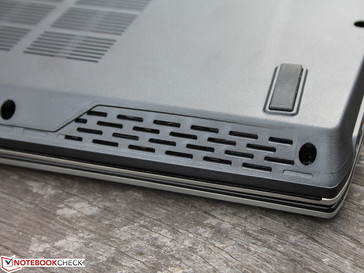
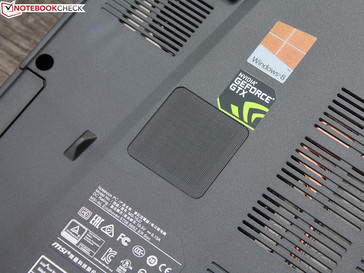
Energy Management
Power Consumption
The power consumption is relatively high in the category comparison. The PE60 guzzles quite a lot from the outlet, particularly in idle mode. 22 watts in energy-savings mode (MSI's Green Mode) using reduced brightness and, of course, disabled GTX graphics core is not seen from any of the other rivals. MSI's PE60 also consumes a lot of power under load and in the stress test. However, this is rather good news because it also indicates that the GPU and CPU utilize the Boost to the best possible extent. Both the Aspire VN7.591G and Asus N551JK-CN166H also provide throttle-free performance. Unlike the XPS 15 that clocks down to almost its base rate right at the beginning of the stress test at core temperatures of over 95 degrees Celsius (~203 degrees Fahrenheit).
MSI's Green Mode does not lead to performance losses and the power consumption is not reduced significantly. The CPU clock in the stress test remained the same at 3.4 GHz; only the GTX's core rate dropped to 1045 MHz (instead of 1200).
The battery was consistently drained during the stress test via AC mode (120 watts from the outlet). The 120-watt power supply cannot cater for the full energy requirement. The battery was depleted by 10% after only ten minutes, which is apparently a discrepancy of over 2 to 5 watts. This phenomenon was not noticed in gaming or the Cinebench loop, and we can give the all-clear signal to power users. However, even when it should occur in practice, we deem the battery effective enough to waive a heavy 150-watt power supply (that is rarely ever maxed-out). The acquisition of a 120-watt power supply is naturally also cheaper for MSI.
| MSI PE60-2QEi581 GeForce GTX 960M, 4210H, HGST Travelstar 7K1000 HTS721010A9E630 | Acer Aspire VN7-591G-727P GeForce GTX 960M, 4720HQ, Toshiba HG6 THNSNJ256G8NU | Asus N551JK-CN166H GeForce GTX 850M, 4200H, HGST Travelstar 5K1000 HTS541010A9E680 | Toshiba Satellite P50t-B-10T Radeon R9 M265X, 4710HQ, Toshiba MQ01ABD100 | Dell XPS 15 (9530-0538) GeForce GT 750M, 4712HQ, Lite-On LMT-512L9M | |
|---|---|---|---|---|---|
| Power Consumption | 10% | 39% | 28% | 22% | |
| Idle Minimum * | 21.8 | 16.2 26% | 8.6 61% | 12.8 41% | 14.6 33% |
| Idle Average * | 26.1 | 20.2 23% | 12 54% | 18.8 28% | 19.6 25% |
| Idle Maximum * | 26.6 | 22.8 14% | 13 51% | 19 29% | 19.8 26% |
| Load Average * | 88.5 | 96.4 -9% | 72.2 18% | 66.7 25% | 92 -4% |
| Load Maximum * | 119.7 | 126.9 -6% | 104 13% | 99.1 17% | 85.8 28% |
* ... smaller is better
| Off / Standby | |
| Idle | |
| Load |
|
Battery Runtime
The battery life in our Wi-Fi test (simulates surfing in the browser) was 168 minutes, i.e. less than three hours. This is very short compared with Dell's XPS 15 (battery: 91 Wh) or Asus' UX501 (96 Wh), which achieve 100 to 150 minutes more. MSI has cut down the capacity; only 42 Wh are available in the six cells. Asus' N551JK runs 100 minutes longer with 56 Wh. The battery needs 2:22 hours to recharge when the PE60 is on (idle).
Pros
Cons
Verdict
MSI has put a lot of effort into winning market shares in the high-priced premium laptop sector with its Prestige series. The PLS screen from Samsung with the sRGB coverage and first-rate viewing angles alongside a matte surface is certainly one of its biggest assets. The gaming suitability for current games in high settings and a surprisingly strong system performance with a 7200-rpm hard drive follow that. The dual-fan cooling system ensures moderate temperatures at an acceptable noise level. However, the idle power consumption is considerably higher than that of the competition. On the other hand, the 4-way speakers and subwoofer are worthy of a genuine multimedia laptop (Nahimic Audio profile). The same is also true of the diversity of interfaces (DisplayPort, 2 gold-plated audio jacks), but not of the webcam's poor image quality. It is even possible to maintain the relatively compact PE60, and an SSD, for example, can be retrofitted via the M.2 slot.
The comparatively simple plastic chassis and short battery life of less than three hours are the drawbacks. The ZenBook UX501 and Dell's XPS 15 have a clear edge here. The XPS 15 will not currently win the comparison with its too old GeForce GT 750M. The ZenBook Pro UX501 is considerably more expensive with starting price of 1600 Euros (~$1780). And thus, the Acer Aspire VN7-591G Black Edition (1600 Euros/~$1780, 4K; much cheaper configuration with FHD, GTX 860M), Asus N551JK(starts at 990 Euros/~$1100, GTX 850M), and Toshiba Satellite P50t-B-10T (1400 Euros/~$1560, 4K, Radeon R9 M265X) are probably the most attractive rivals.
MSI PE60-2QEi581
-
03/25/2016 v5(old)
Sebastian Jentsch


 Deutsch
Deutsch English
English Español
Español Français
Français Italiano
Italiano Nederlands
Nederlands Polski
Polski Português
Português Русский
Русский Türkçe
Türkçe Svenska
Svenska Chinese
Chinese Magyar
Magyar